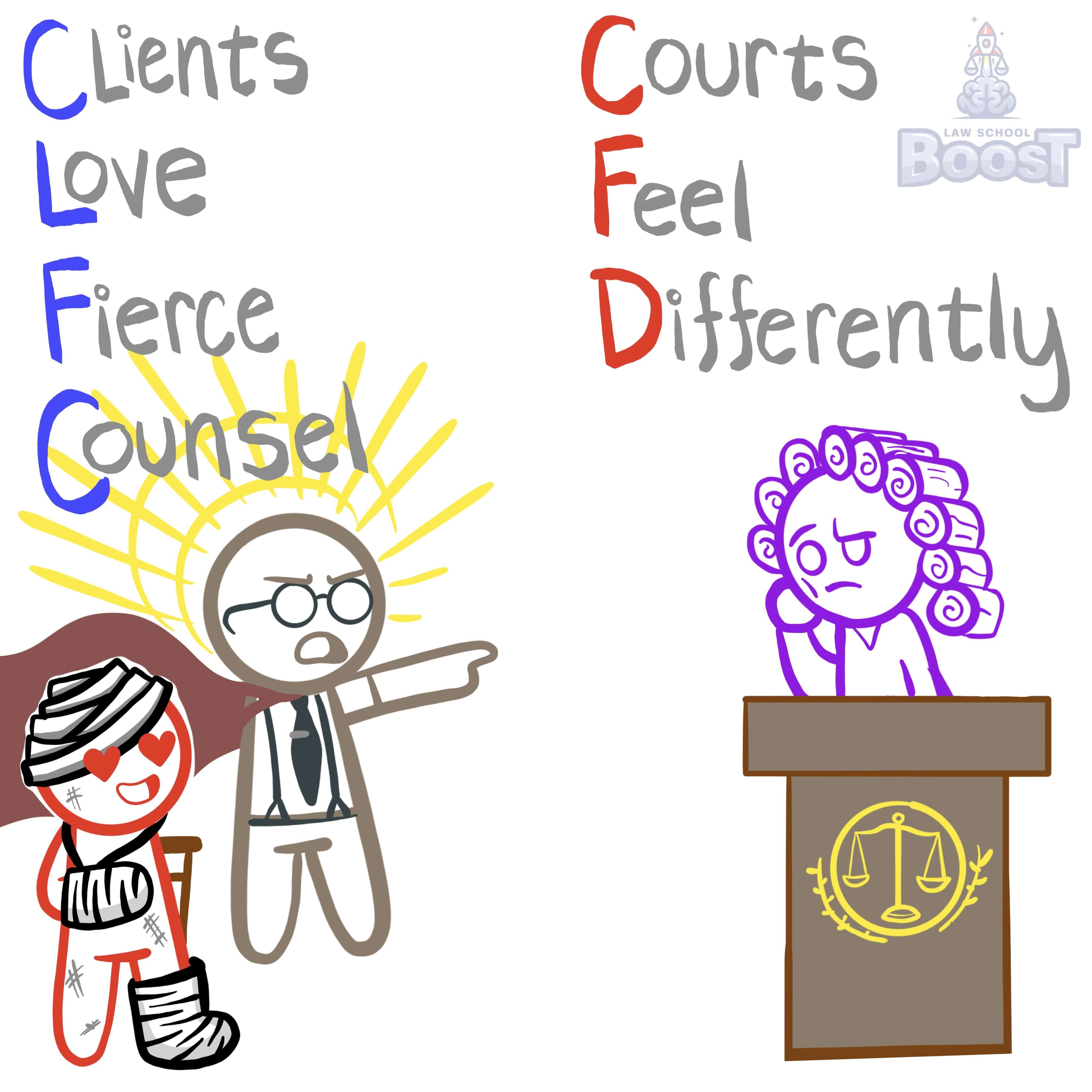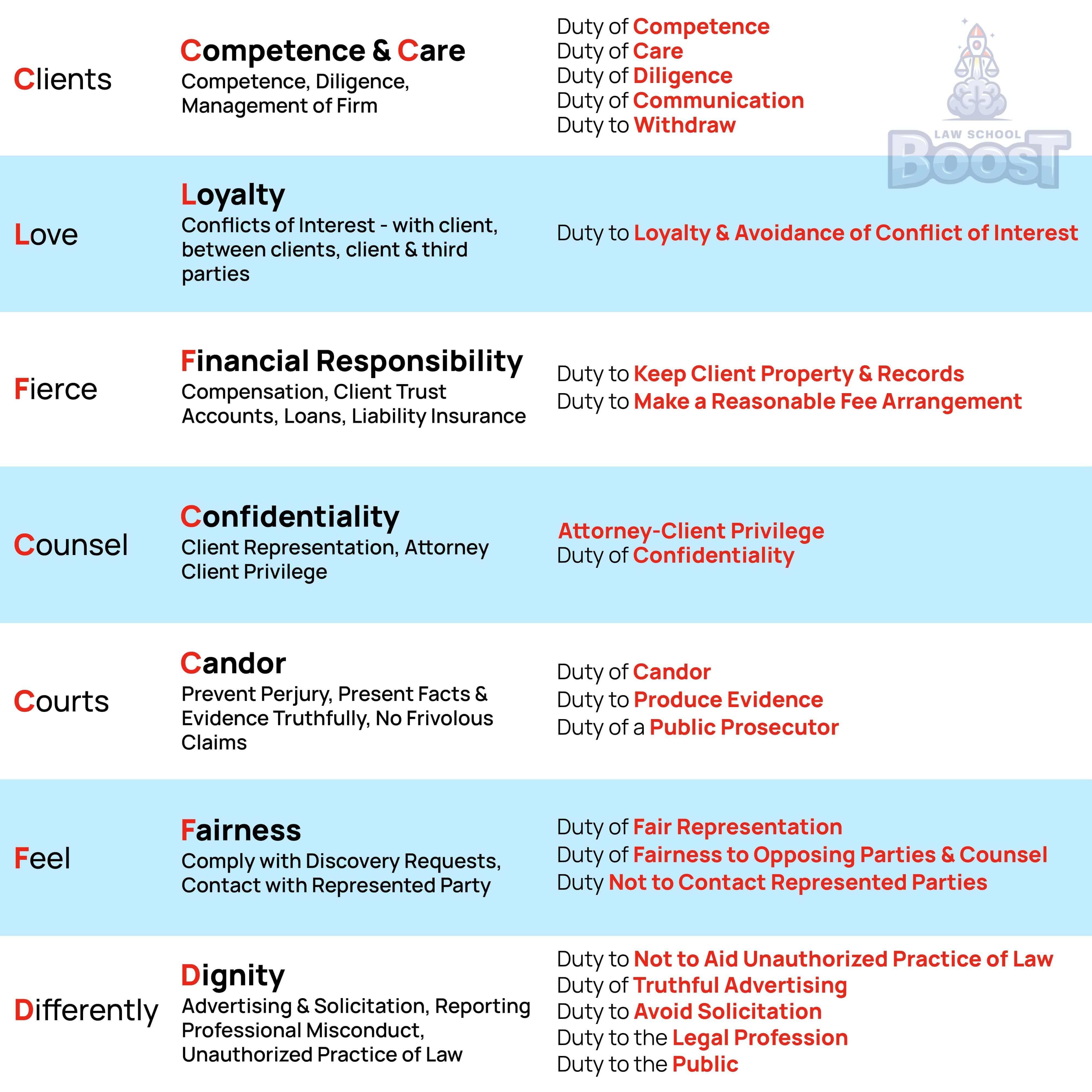‼️
Prof Responsibility • Financial Duties
PR#018
Legal Definition
Like the ABA, California allows a lawyer to fee split with another lawyer as long as the client provides written consent and it doesn't increase the fees above what they would normally be. However, unlike the ABA rule, California does not require proportionality.
Plain English Explanation
Both California and the ABA agree on two fundamental points. First, the client needs to be in the loop. They can't be kept in the dark about who's getting paid what. The client must give their consent in writing, ensuring transparency in the legal process. Second, fee splitting can't be used as an excuse to jack up the price. The total fee should be what the client would typically pay for such services, regardless of how many lawyers are involved.
But here's where California takes a different path: it doesn't insist on proportionality. In the ABA model, lawyers need to split the fee based on the work they do, or they must both take on full responsibility for the case. California doesn't have this requirement.
This difference is more than just a technicality. It gives California lawyers more flexibility in how they structure their collaborations. For instance, under California rules, a lawyer could refer a case to another lawyer and receive a portion of the fee without doing any work or assuming responsibility for the case. As long as the client agrees and the total fee isn't inflated, this arrangement is acceptable.
This approach can be seen as more permissive, potentially encouraging more referrals and collaborations between lawyers. It might make it easier for clients to get connected with the right specialist for their case. However, it also puts more responsibility on the client to understand and agree to these arrangements.
Critics might argue that the California approach could lead to situations where lawyers profit from referrals without adding value to the case. Supporters, on the other hand, might say it recognizes the value of connecting clients with the right lawyer, even if the referring lawyer doesn't do substantive work on the case.
In practice, this means that California lawyers have more options when it comes to fee splitting. They still need to prioritize client consent and fair pricing, but they have more flexability in how they divide fees among themselves.
But here's where California takes a different path: it doesn't insist on proportionality. In the ABA model, lawyers need to split the fee based on the work they do, or they must both take on full responsibility for the case. California doesn't have this requirement.
This difference is more than just a technicality. It gives California lawyers more flexibility in how they structure their collaborations. For instance, under California rules, a lawyer could refer a case to another lawyer and receive a portion of the fee without doing any work or assuming responsibility for the case. As long as the client agrees and the total fee isn't inflated, this arrangement is acceptable.
This approach can be seen as more permissive, potentially encouraging more referrals and collaborations between lawyers. It might make it easier for clients to get connected with the right specialist for their case. However, it also puts more responsibility on the client to understand and agree to these arrangements.
Critics might argue that the California approach could lead to situations where lawyers profit from referrals without adding value to the case. Supporters, on the other hand, might say it recognizes the value of connecting clients with the right lawyer, even if the referring lawyer doesn't do substantive work on the case.
In practice, this means that California lawyers have more options when it comes to fee splitting. They still need to prioritize client consent and fair pricing, but they have more flexability in how they divide fees among themselves.
Hypothetical
Hypo 1: Sam needs a specialist for his complex patent case. His regular lawyer, Bob, refers him to Amy, a patent law expert. Bob and Amy agree to split the fee 70-30 in Amy's favor, even though Bob won't be doing any work on the case. They explain this to Sam, who agrees and signs a written consent. The total fee is in line with standard rates for patent cases. Result: In California, this fee-splitting arrangement is permissible. It meets the two key requirements: Sam has provided written consent, and the total fee isn't increased due to the split. The fact that Bob isn't doing any work on the case doesn't matter under California rules, unlike under ABA rules.
Hypo 2: Sam hires Bob for a personal injury case. Bob realizes he needs Amy's expertise and proposes a fee split where Bob will do 20% of the work but receive 50% of the fee, while Amy will do 80% of the work and receive 50% of the fee. They explain this to Sam, who agrees and signs a written consent. Their combined fee is within the normal range for such cases. Result: This arrangement would be problematic under ABA rules due to the lack of proportionality, but it's acceptable in California. As long as Sam has given written consent and the total fee is reasonable, the specific division of labor and fees between Bob and Amy doesn't matter under California rules.
Hypo 3: Sam approaches Bob about a complex tax law case. Bob, who doesn't handle tax law, refers Sam to Amy, a tax specialist. Bob asks Amy for 40% of her fee for the referral. Amy agrees and they inform Sam verbally, but don't get his agreement in writing. The total fee is reasonable for a tax case. Result: This fee-splitting arrangement violates California rules. While the disproportionate split (Bob getting 40% for just a referral) is allowed, the lack of written consent from Sam is not. California, like the ABA, requires the client's written agreement to any fee-splitting arrangement.
Hypo 4: Sam hires Bob for a divorce case. Bob brings in Amy, a family law specialist, to assist. They agree to split the fee 50-50, with Amy doing most of the work. They inform Sam in writing, and Sam signs an agreement. However, their combined fee is significantly higher than the usual rate for similar divorce cases in their area. Result: This scenario violates California rules. While the written consent and the disproportionate split are fine, the inflated total fee is not. Both California and ABA rules require that fee splitting doesn't increase the overall cost to the client beyond what's reasonable.
Hypo 5: Sam needs representation for a business litigation case. His friend refers him to Bob, who then brings in Amy, a litigation specialist. Bob and Amy agree to split the fee 60-40 in Amy's favor, based on their expected workload. They provide Sam with a written agreement detailing the arrangement, which Sam signs. The total fee is within the normal range for such cases. As the case progresses, Bob ends up doing less work than initially planned, but the fee split remains the same. Result: This arrangement is acceptable under California rules. The key requirements - written client consent and a reasonable total fee - are met. Unlike under ABA rules, the fact that the actual division of labor didn't match the fee split doesn't matter in California.
Hypo 2: Sam hires Bob for a personal injury case. Bob realizes he needs Amy's expertise and proposes a fee split where Bob will do 20% of the work but receive 50% of the fee, while Amy will do 80% of the work and receive 50% of the fee. They explain this to Sam, who agrees and signs a written consent. Their combined fee is within the normal range for such cases. Result: This arrangement would be problematic under ABA rules due to the lack of proportionality, but it's acceptable in California. As long as Sam has given written consent and the total fee is reasonable, the specific division of labor and fees between Bob and Amy doesn't matter under California rules.
Hypo 3: Sam approaches Bob about a complex tax law case. Bob, who doesn't handle tax law, refers Sam to Amy, a tax specialist. Bob asks Amy for 40% of her fee for the referral. Amy agrees and they inform Sam verbally, but don't get his agreement in writing. The total fee is reasonable for a tax case. Result: This fee-splitting arrangement violates California rules. While the disproportionate split (Bob getting 40% for just a referral) is allowed, the lack of written consent from Sam is not. California, like the ABA, requires the client's written agreement to any fee-splitting arrangement.
Hypo 4: Sam hires Bob for a divorce case. Bob brings in Amy, a family law specialist, to assist. They agree to split the fee 50-50, with Amy doing most of the work. They inform Sam in writing, and Sam signs an agreement. However, their combined fee is significantly higher than the usual rate for similar divorce cases in their area. Result: This scenario violates California rules. While the written consent and the disproportionate split are fine, the inflated total fee is not. Both California and ABA rules require that fee splitting doesn't increase the overall cost to the client beyond what's reasonable.
Hypo 5: Sam needs representation for a business litigation case. His friend refers him to Bob, who then brings in Amy, a litigation specialist. Bob and Amy agree to split the fee 60-40 in Amy's favor, based on their expected workload. They provide Sam with a written agreement detailing the arrangement, which Sam signs. The total fee is within the normal range for such cases. As the case progresses, Bob ends up doing less work than initially planned, but the fee split remains the same. Result: This arrangement is acceptable under California rules. The key requirements - written client consent and a reasonable total fee - are met. Unlike under ABA rules, the fact that the actual division of labor didn't match the fee split doesn't matter in California.
Visual Aids


Related Concepts
How and when must a lawyer determine fee arrangements with a new client?
How may a contingent fee be calculated?
In California, how and when must a lawyer determine fee arrangements with a new client?
In California, what constitutes "reasonable fees"?
Under the ABA, which types of cases are prohibited from contingent fee arrangements?
What constitutes "reasonable fees"?
What is a contingency fee?
What is required to fee split with another lawyer not in their firm?
What must a contingent fee offer warn the client of, and how?


